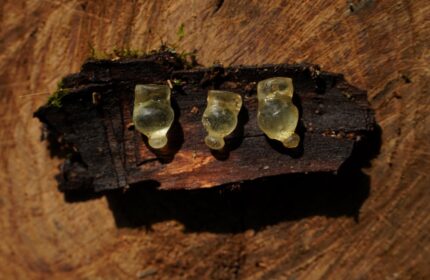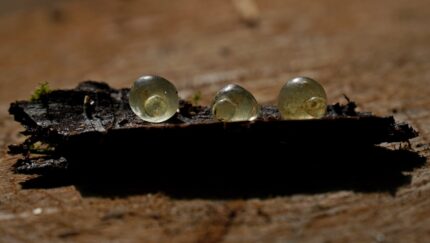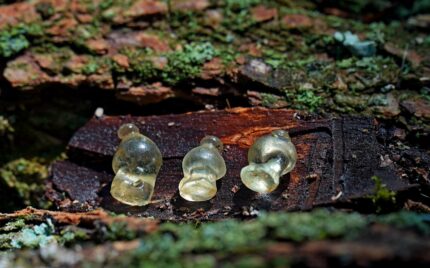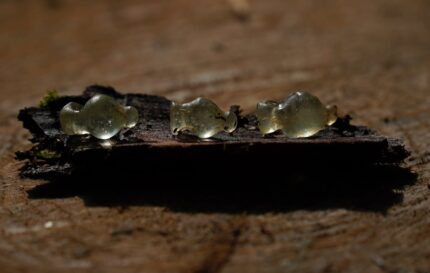Archaeologists have unearthed unique glass pendants near the town of Kotelva in the Poltavska oblast of central Ukraine. A team from the Institute of Archeology of the National Academy of Sciences of Ukraine were excavating a Scythian-era burial ground on Barvinkova Mountain when they discovered the three small pendants that date to around the 4th century B.C. Nothing like them has been found before in Ukraine.
There is almost no information about them yet, but they are so unusual and charming I’m posting them anyway. Archaeologists are calling them amphora-shaped, but they look more like provolones to me.
After a thorough study at the National Academy of Sciences of Ukraine, they will go on display in the museum of the Bilsk Historical and Cultural Reserve, site of the largest early Iron Age fortified settlement in Europe.




Frankly, I had to search for “provolones”, and to find that this are special cheese loafs.
whc.unesco.org/uploads/news/documents/news-433-1.pdf
Maybe there were similar ones found in the rather vast area that those peoples were roaming back and forth.
:hattip:
Could they be the remnants of someone playing with molten glass?
When you don’t know what they are, the answer is always “loom weights.”
“ritual object,” or, all else failing, “fertility symbol.”
Amphora shaped seems like a decent description, they look like some kind of receptacles to me.
Amphora-shaped seems like a decent description, they look like some kind of receptacles to me.
I’m thinking they were little stubby legs for a wooden bowl or tray.
In case there is really no “Rock’n Roll” or “Sex” involved whatsoever, it might be all about “Drugs”, …like in the Americas:
upload.wikimedia.org/wikipedia/commons/a/a4/Psilocybe_Mushrooms_statues.jpg
I am unsure about any kind of mushrooms, but Herodotus writes in Bk.4.74-75 about Scythians and their “Cannabis” and its particular use in their sweat lodges:
————
74. “Now they have hemp growing in their land [“κάνναβις”], which is very like flax except in thickness and in height, for in these respects the hemp is much superior. This grows both of itself and with cultivation; and of it the Thracians even make garments[…]”
75. “The Scythians then take the seed of this hemp and creep under the felt coverings, and then they throw the seed upon the stones which have been heated red-hot: and it burns like incense and produces a vapour so think that no vapour-bath in Hellas would surpass it: and the Scythians being delighted with the vapour-bath howl like wolves. […] Their women however pound with a rough stone the wood of the cypress and cedar and frankincense tree, pouring in water with it, and then with this pounded stuff, which is thick, they plaster over all their body and also their face; and not only does a sweet smell attach to them by reason of this, but also when they take off the plaster on the next day, their skin is clean and shining.”
————
I’m pretty sure those are *not* amphorae. It makes far more sense if they’re pomegranates. The fruit of death and resurrection, etc. The ancient Greeks, Romans, Egyptians, Assyrians, all used it in their art and specifically in necklaces.
https://lostinjewels.com/wp-content/uploads/2017/02/These-thirteen-beads-in-the-shape-of-pomegranates-have-been-formed-from-thin-gold-foil-shaped-over-a-core-which-is-still-present.-New-Kingdom-c.-1550-1070-BC.L.-1.4-1.6-cm-13-beads.png
These were all interesting comments. Pomegranates.
Now that you mention it, they do resemble pomegranate blossoms by shape. What an interesting idea.
Some people say that the *squash blossom * motif used in Navajo silver work is also derived from a pomegranate symbol.